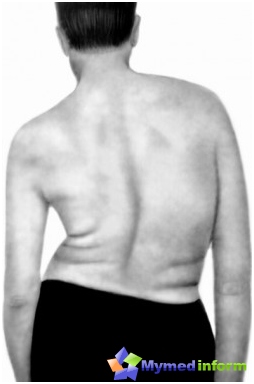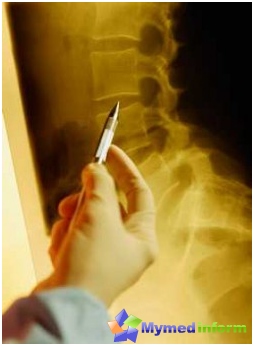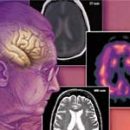
This disease has opened quite a long time. The first formation of bones was described by scientists of Picolomini and Etienne. They presented their research results in the 16th century. True, before the description of the disease was still far. The next step towards the discovery of this pathology did at the end of the 17th century a scientist Brunetner, who found in a newborn baby with splitting in the spine incomprehensible cavities, which stretched almost along the whole spinal cord. It was finally possible to find out only in the 19th century by the scientist Olivier Angers, who was able to prove that the process of education in the spinal cord of cavities is a separate pathology that was named «Siringomyelia». This term was formed from two Greek words, such as: syrinx - «emptiness» and myelos - «spinal cord».
This is a rather rare disease. After all, it meets 10 per 100 thousand people. And on observations most often, they are sick of men aged 30-35 years. Women are sick less. In rare cases, the disease can develop in old age or in childhood. The dependence of the disease from race or place of residence was not marked, but in practice there were cases when the disease was detected from all family members.
The disease is developing inappropriate, so a person may not even guess. Unfortunately, this pathology is considered incurable, but sometimes it can still go to the Stage of remission. Modern medicine in the presence of this disease allows you to achieve a longer full-fledged life. At the same time, treatment should be treated as early as possible.
Siringomyelia usually applies only to the spine department. In rare cases, pathology hits the oblong brain. The reason for the formation of such cavities is the expansion of the spinal channel. At the same time, the fluid that flows through it is encountered to certain obstacles, which forces these obstacles for further flow. As a result, the fields of these parts are gradually formed by cavities. At the same time, some cells are beginning to develop that do not participate in the transfer of nerve impulses. These all changes cause a violation of a full-fledged impulse transmission process from a brain to various organs and back.
Causes
Unfortunately, these reasons why such a change occurs in the body still remain in question. Siringomyseli may be congenital or acquired. Congenital type of disease is usually developing due to existing pathologies in the embryo, for example, when the spinal cord is incorrectly laid.
The reason for the appearance of this disease may also be the congenital pathology of certain brain structures. One of these pathologies is the Dandy Walker syndrome and anomalia of Arnold Kiaari. With a congenital type of Siringomyelia, cavities are usually formed in the upper portion of the chest department. Sometimes the formation of cavities is observed in the lower part of the cervical spine. As for the acquired type of disease, it is often the result of a spinal cord injury or the presence of tumors in it.
Symptoms

The most frequent signs of Siringomysel are sensitivity disorders. Such violations are available in all patients. These symptoms are manifested both in the form of symptoms of irritation and in the form of symptoms of loss. Most patients also have pain in the upper limbs, in the chest and in the cervical. Pain sensations are usually amplified under the influence of physical exercise and hypothermia, and decrease into rest.
Approximately half of the patients marked the paresthesias, which manifest themselves with the feeling of numbness, passing the electric current, crawling goosebumps, as well as the feeling of cold and burning. Usually patients are asked for help when they appear pain and paresthesia. When conducting a survey, a patient is diagnosed with a violation of pain and temperature sensitivity. In this case, the patient usually retains tactile deep and kinesthetic sensitivity. The sensitivity impairment indicates that the resulting scratches, abrasions and ears of the hands are painful. Sensitivity disorders may be of varying degrees of severity and localization, but most often such disorders are celebrated on hand and torso in the form of the so-called «Polukurtka» and «Jacket». One patient can be two or three foci of sensitive disorders having different degrees of depth. The dissociated type of sensitivity disorders is usually associated with the lesion of the anterior white spike cells or the rear horns of the spinal cord. If the cavities appear in the upper cervical spine, then there is a disruption of sensitivity on the face in the zona. The impaired of deep sensitivity usually occurs only in patients whom the process has been leaking enough.
In addition to sensitive disorders, in patients often manifests motor disorders. It is worth noting that the degree of such violations is not so significant as a disturbance of sensitivity. Moreover, these violations usually appear only at later stages of the disease. Due to the fact that the place of formation of pathological processes is most often a cervical spinal cord department, the upper limbs usually suffer much more often than the lower. At the same time, patients complain that the muscular power has decreased in the hands. During the diagnosis, the patient detects such pathologies as muscle hypotrophy, sluggish paresis, hypotension, loss and reduction of tendon-high reflexes, as well as reductions of individual muscle fibers. The cause of sluggish cuts is squeezing or the arrangement of the front horns of the spinal cord.
At the later stages of the disease, due to the impact of the processes of damage to neurons on pyramidal pathways, conductive symptoms begin to develop in patients. These symptoms are manifested in reducing the muscular strength of the legs, increasing the muscle tone. It is also established an increase in segmental reflexes and pathological signs of Oppenheim, Babinsky, Rossolimo and others. In some cases, signs of the spastic and sluggish pan may appear on one limb. At the same time, the functions of the pelvis organs usually do not suffer.
Treatment

For the diagnosis and treatment of this disease, several specialists are needed in various fields of medicine. In particular, neurologists need neurologists, neurosurgeons, radiologists and orthopedists. Treatment is usually carried out by surgical path and its main focus is to suspend the progression of the reaches of the spinal cord, as well as the preservation of its necessary functions. The operation on the spinal cord is usually carried out using its compression. In addition, during the operation, manipulations are performed necessary in order to adjust the deformation or to impose the necessary shunts. Fruit fabric implants are carried out to close cystic formations.
Thanks to surgical interference, it is possible to stabilize or at least improve the symptoms in patients. Many specialists tend to carry out surgical treatment only in cases where the patient has progressive neurological symptoms. At the same time, delaying with the operation during the progression of the disease can lead to irreversible damage to the spinal cord. In addition, it can cause the development of persistent neurological disorders.
As for drug treatment, it is often prescribed to reduce swelling around the spinal cord. Patients to prevent increase pressure on damaged departments It is recommended to avoid active physical activity. If you do not conduct treatment with progressive symptoms, the patient can live from six months to a year.









